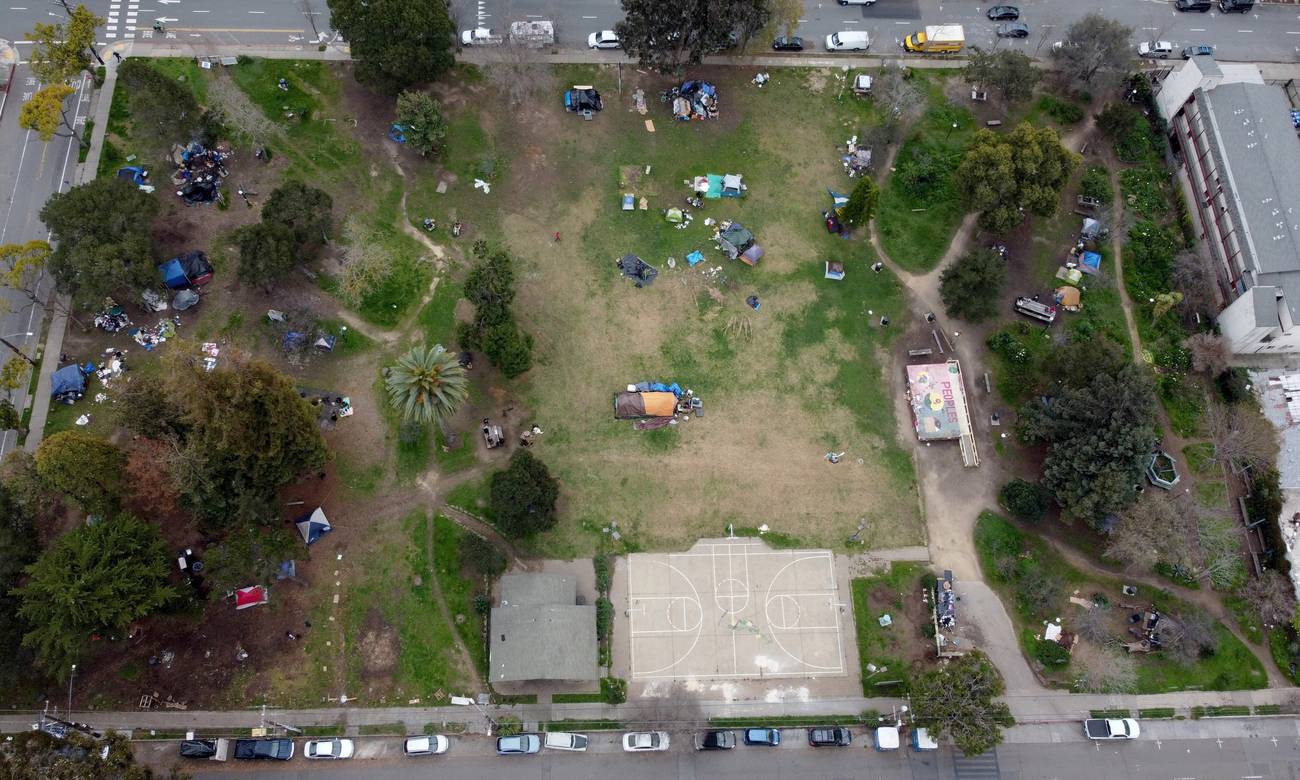Christ’s Utopia Stumbles in Berkeley
Legal challenges from city activists have thrown sand in the gears of the university’s expansion plans for the historic People’s Park



In Berkeley, the birthplace of the Free Speech Movement—and home to the oldest campus in the University of California’s statewide system of higher education—the homeless, along with housewives and hedge fund financiers, know about People’s Park, a 2.8-acre parcel (also known as lot 1875) on the city’s densely populated South Side. In the late 1960s, students, street people, and scholars seized the property and aimed to turn it, in the parlance of that era, into “liberated territory.” That never happened, in large part because Gov. Ronald Reagan sent in the National Guard. People’s Park reverted to an empty lot, though the idea of the park never died.
Recently, the university announced that it would build two skyscrapers on lot 1875 that would provide housing for students. Not surprisingly, in a city where history is destiny, the park has become a hot topic all over again.
Pessimists in Berkeley’s activist circles thought all was lost, or nearly so, when the Regents of the University of California approved a plan for what Chancellor Carol Christ called “our new People’s Park.” A Bay Area architect and advocate for open space told me on condition of anonymity, “we’re losing the battle.” He didn’t want to be perceived as an activist who was giving up the fight. Indeed, the troops are rallying again, gathering signatures and itching for a fight in court and on the ground. Over 100 individuals have signed a petition in support of open space on lot 1875 and for the preservation of the history of the park. They include three former mayors, Rabbi Michael Lerner, the activist and former council member Ying Lee, and Osha Neumann, a lawyer for the homeless.
The “new” park, Christ insisted, would not efface the old park, but rather create a new utopia. It would provide housing for students and for the homeless, create open space for all, and create a memorial to celebrate the history of a landmark that has been a cultural and political battleground for more than 50 years.
“We have an opportunity for a win-win-win benefitting our students, unhoused people in our community, and our neighbors across the city,” Christ noted in a message to the campus community on Sept. 30. Christ’s “we” obviously didn’t include everyone in Berkeley. A headline in Berkeleyside, the stellar online publication, read, “Labor, community groups file lawsuits to stop Cal ‘gobbling up Berkeley.’” Has public opinion started to swing behind the people who stand with the park and against the Regents? Was local media aligning itself with activists who want the park to be listed with the National Register? It would seem so.
After Christ’s rosy announcement, the California State Historical Resources Commission voted unanimously for People’s Park to join the “National Register of Historical Places.” It’s not a done deal, but if the Keeper of the Register goes along with that unanimous vote, ground won’t be broken any time in the near future for Christ’s utopia. Still, as Harvey Smith, a fierce advocate for a Green New Deal and a Living New Deal said, “The park can be placed on the National Register, and Carol Christ and her crew can still go ahead and destroy it.” It could be a pyrrhic victory.
Two local organizations, the People’s Park Historic District Advocacy Group (PPHDAG) and Make UC a Good Neighbor, recently filed suit against the Regents. They both alleged that the university failed to meet the standards of the California Environmental Quality Act (CEQA), which requires examination of four key areas: impact on the historical record; rise or fall of student population; displacement of local residents; and increased levels of noise. PPHDAG and Make UC a Good Neighbor call for the creation of a democratic process to ensure cultural, historical, and aesthetic “compatibility” for all new UC construction.
The American Federation of State, County and Municipal Employees (AFSCME) Local 3299, which represents workers at UC Berkeley and Lawrence Livermore National Laboratory, has also joined the fray. In a document filed in August 2021 with the Supreme Court of California, lawyers argued that union members would “suffer irreparable harm” if the Regents failed “to take the required steps to comply with CEQA’s procedures and protect the environment.”
In Berkeley, it seems, the ’60s are still alive. As William Faulkner observed, “The past is never dead. It’s not even past.”
Jonah Raskin, professor emeritus at Sonoma State University, is the author of 14 books, including biographies of Jack London, Allen Ginsberg, and Abbie Hoffman. His new book of poetry is The Thief of Yellow Roses (Regent Press).